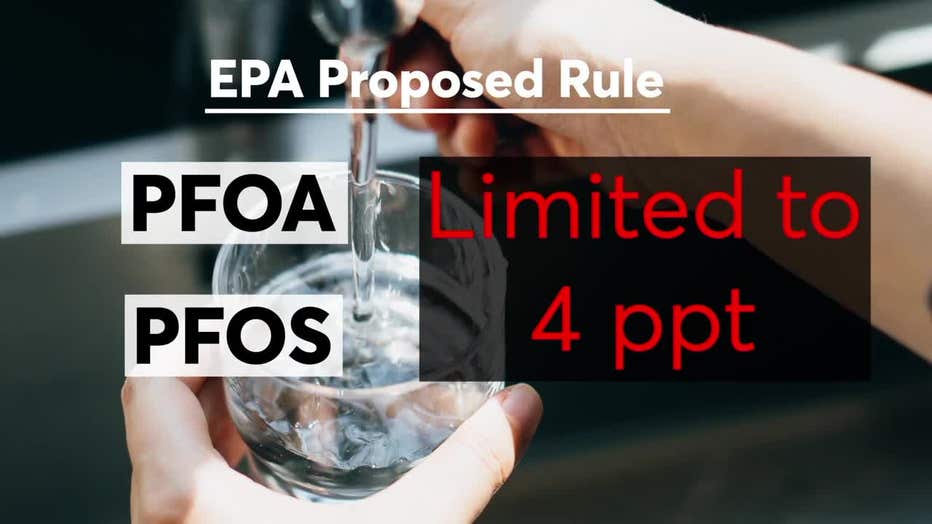EPA combats PFAS in water
EPA combats PFAS in water
The EPA is proposing the first-ever national standard to protect communities from PFAS in drinking water.
In the battle to keep our drinking water clean and safe, the Environmental Protection Agency recently announced important new changes relating to PFAS, or "forever chemicals."

Consumer Reports sounded the alarm on these chemical dangers years ago and now has more about what the new rules mean for you.
The EPA is proposing the first-ever national standard to protect communities from PFAS in drinking water.
The proposed rule would require public water systems to test for and limit six PFAS chemicals. Two of the worst offenders, PFOA and PFOS, would be limited to levels of just 4 parts per trillion for each of them.

The EPA’s previous guideline, which was voluntary, was 70 parts per trillion for both of them combined.
PFAS are often added to products to make them waterproof, stain-resistant, or nonstick. They essentially never break down naturally.
In recent years, PFAS have been linked to a growing list of health problems, including an increased risk for certain cancers, liver damage, and neurodevelopmental problems.

Once products containing PFAS are made, these chemicals accumulate in the environment, ending up in our water supply, in our food, and in us.
When the new regulation would go into effect is still unknown, but there are things you can do to limit your exposure to PFAS from other sources.
Avoid stain- and water-resistant clothing and carpets, and use cookware that’s PTFE-free, such as pans with ceramic coatings.

It’s important to note that the proposed rule only applies to public water systems and not to private wells, which about 1 in 8 people relies on for drinking water.

All Consumer Reports material Copyright 2023 Consumer Reports, Inc. ALL RIGHTS RESERVED. Consumer Reports is a not-for-profit organization which accepts no advertising. It has no commercial relationship with any advertiser or sponsor on this site. Fo

